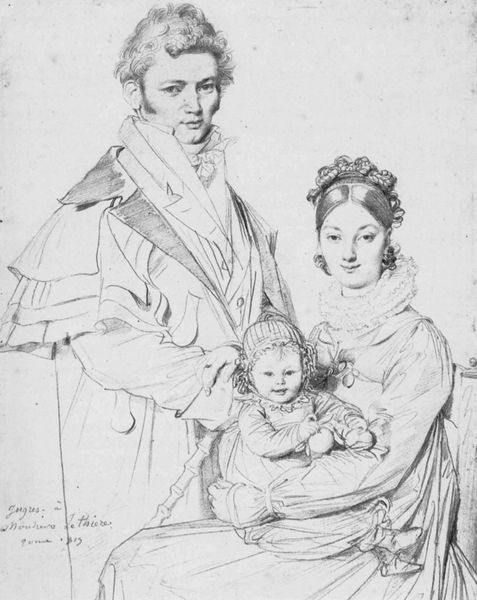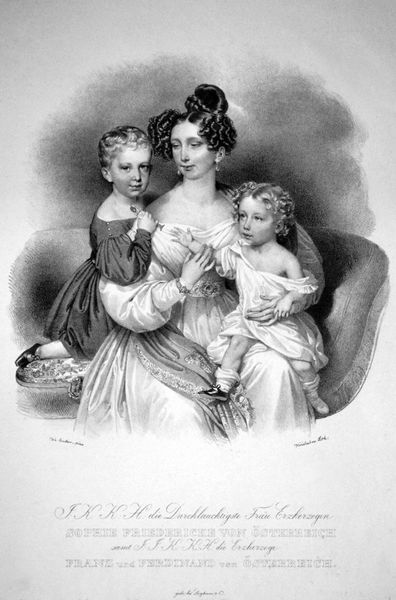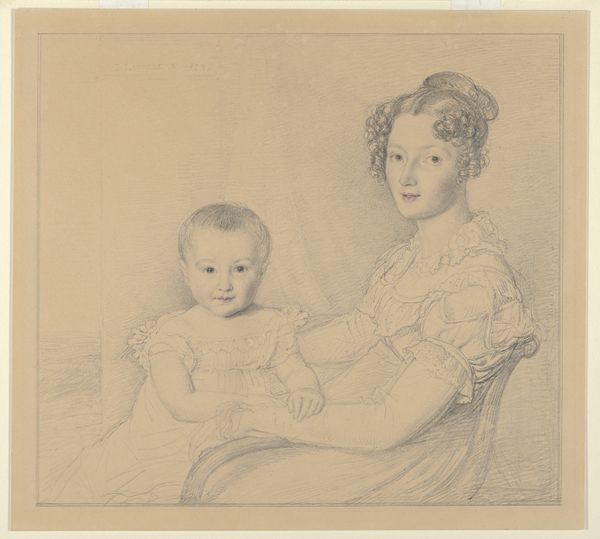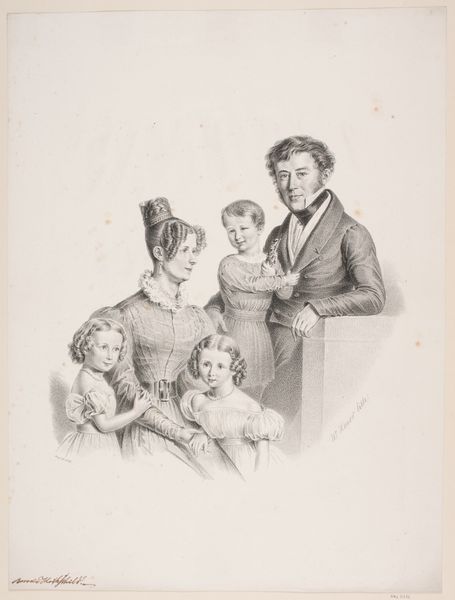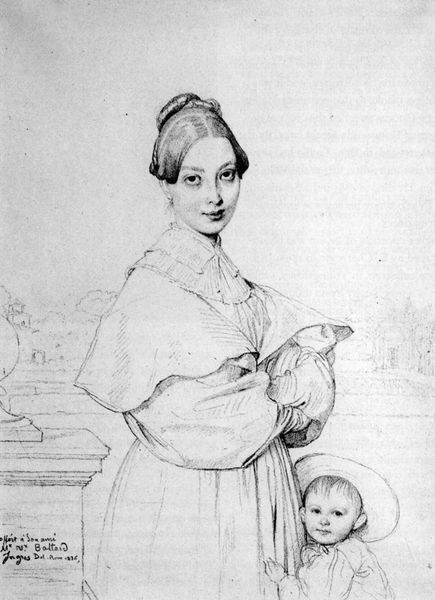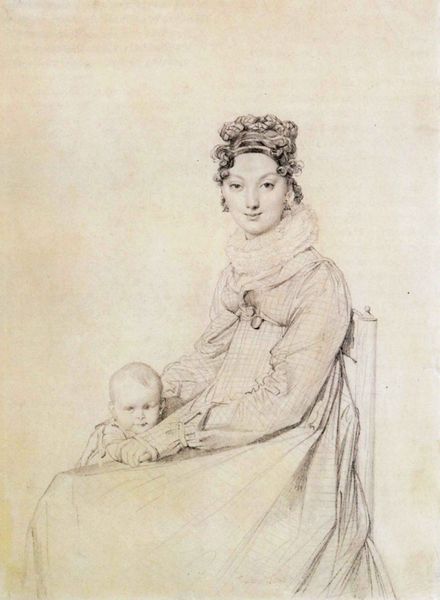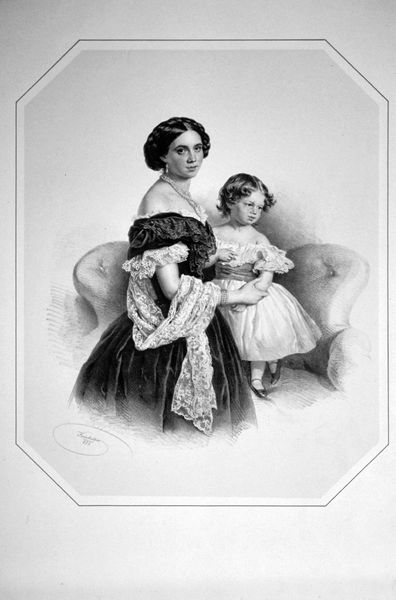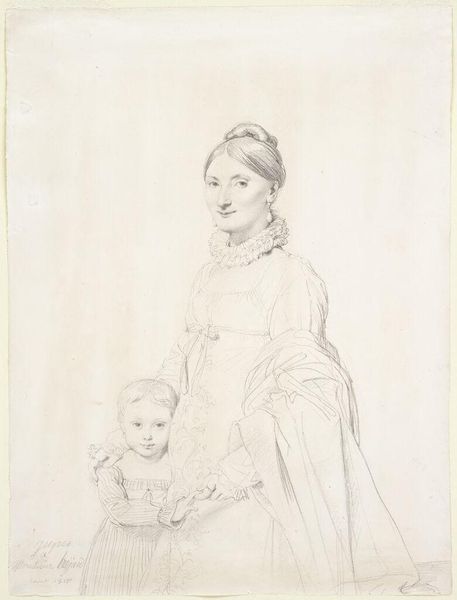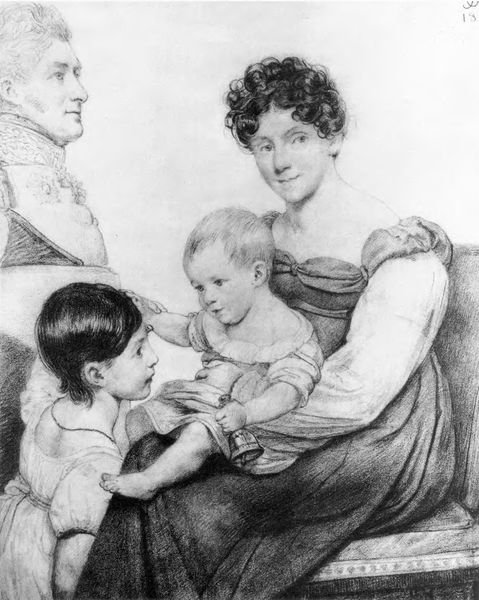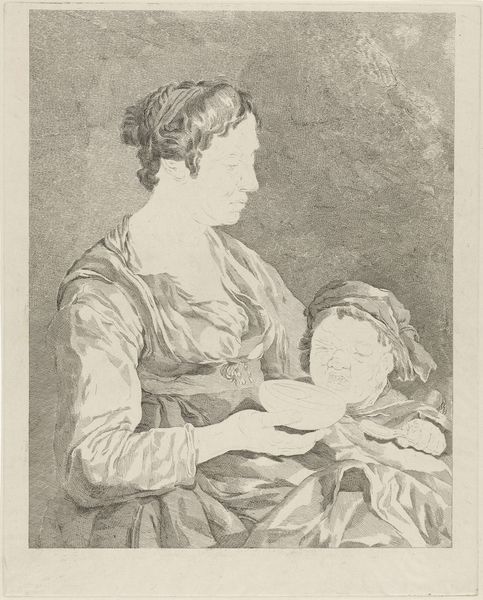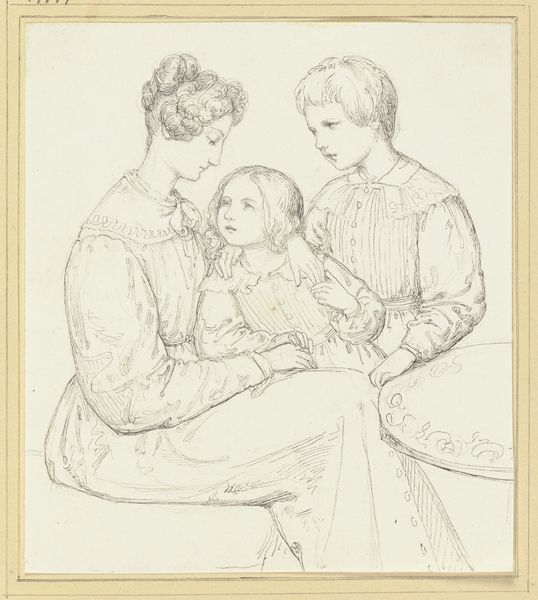
drawing, pencil
#
portrait
#
pencil drawn
#
drawing
#
neoclassicism
#
pencil sketch
#
charcoal drawing
#
child
#
pencil drawing
#
sketch
#
group-portraits
#
pencil
#
portrait drawing
#
realism
Copyright: Public domain
Curator: Jean-Auguste-Dominique Ingres' "The Cosimo Andrea Lazzerini Family," is a striking portrait done in pencil. Ingres, working in the Neoclassical style, creates an intimate glimpse into familial representation. Editor: It’s almost like looking at a faded dream. The delicate lines of the pencil give it this soft, ethereal quality. But something feels a little stiff, too... not entirely at ease. Curator: I think that unease speaks volumes about the performance of class and gender. Ingres’ portrait offers a glimpse into the 19th century’s construction of family and power structures within it. What appears traditional isn't necessarily natural or seamless; there is labor involved. Editor: The ruffles, though! Mountains of them around the woman’s face and cascading down her arms, even on the little girl's bonnet. Do you think that was actually fashionable, or more about flaunting wealth, literally wearing their status? Curator: Absolutely! That exaggerated display served a purpose. Those fabrics would be coded for race and gender. Consider how portraiture served elite families like the Lazzerinis: art could be harnessed to reinforce a specific social narrative about class and wealth. Editor: And what about the little girl? Her positioning feels, well, less like she is part of the portrait and more like an… accessory. Curator: Well, it isn’t uncommon in historical European painting. It reminds me of analyses around the ‘Madonna and child’ depictions in religious paintings of the period— where both motherhood and lineage were put on display. Here, the little girl embodies continuity and legacy, visually emphasizing the patriarchal succession. Editor: It’s fascinating how much social commentary can be packed into a drawing. Seeing it this way adds so many layers. It’s almost like decoding a hidden language. Curator: Ingres’ portrait captures more than just the likenesses of the Lazzerini family; it reflects the prevailing norms and expectations surrounding family, class, and power in its time. I think this invites us to investigate the narratives that are at play within any artwork, regardless of its surface appeal. Editor: Absolutely! The light touch of the pencil captures this sort of ghost-like image of the family—the drawing acts as a reminder about these people from a completely different world and a different set of expectations.
Comments
No comments
Be the first to comment and join the conversation on the ultimate creative platform.
